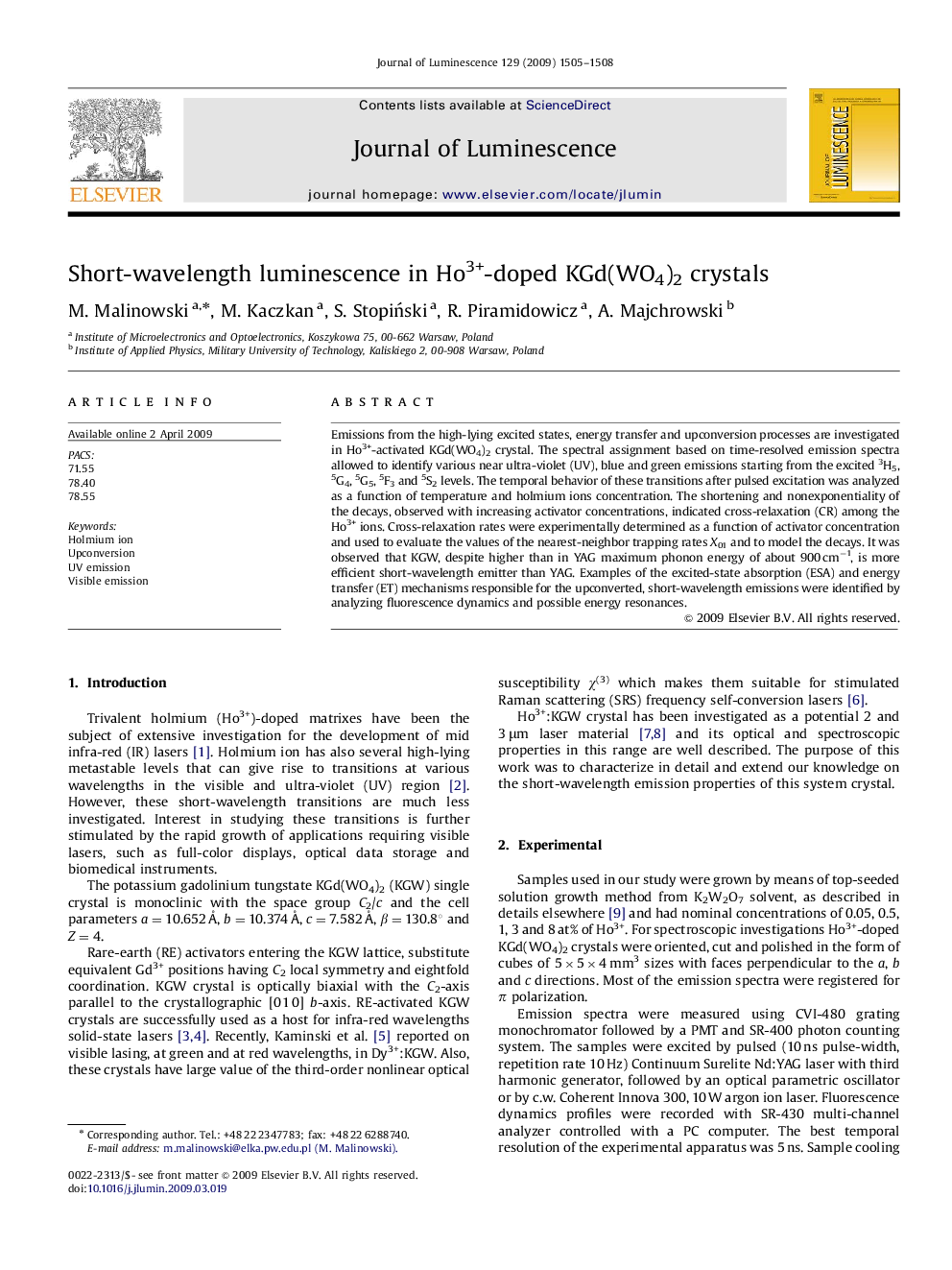| Article ID | Journal | Published Year | Pages | File Type |
|---|---|---|---|---|
| 5402648 | Journal of Luminescence | 2009 | 4 Pages |
Abstract
Emissions from the high-lying excited states, energy transfer and upconversion processes are investigated in Ho3+-activated KGd(WO4)2 crystal. The spectral assignment based on time-resolved emission spectra allowed to identify various near ultra-violet (UV), blue and green emissions starting from the excited 3H5, 5G4, 5G5, 5F3 and 5S2 levels. The temporal behavior of these transitions after pulsed excitation was analyzed as a function of temperature and holmium ions concentration. The shortening and nonexponentiality of the decays, observed with increasing activator concentrations, indicated cross-relaxation (CR) among the Ho3+ ions. Cross-relaxation rates were experimentally determined as a function of activator concentration and used to evaluate the values of the nearest-neighbor trapping rates X01 and to model the decays. It was observed that KGW, despite higher than in YAG maximum phonon energy of about 900Â cmâ1, is more efficient short-wavelength emitter than YAG. Examples of the excited-state absorption (ESA) and energy transfer (ET) mechanisms responsible for the upconverted, short-wavelength emissions were identified by analyzing fluorescence dynamics and possible energy resonances.
Related Topics
Physical Sciences and Engineering
Chemistry
Physical and Theoretical Chemistry
Authors
M. Malinowski, M. Kaczkan, S. StopiÅski, R. Piramidowicz, A. Majchrowski,
